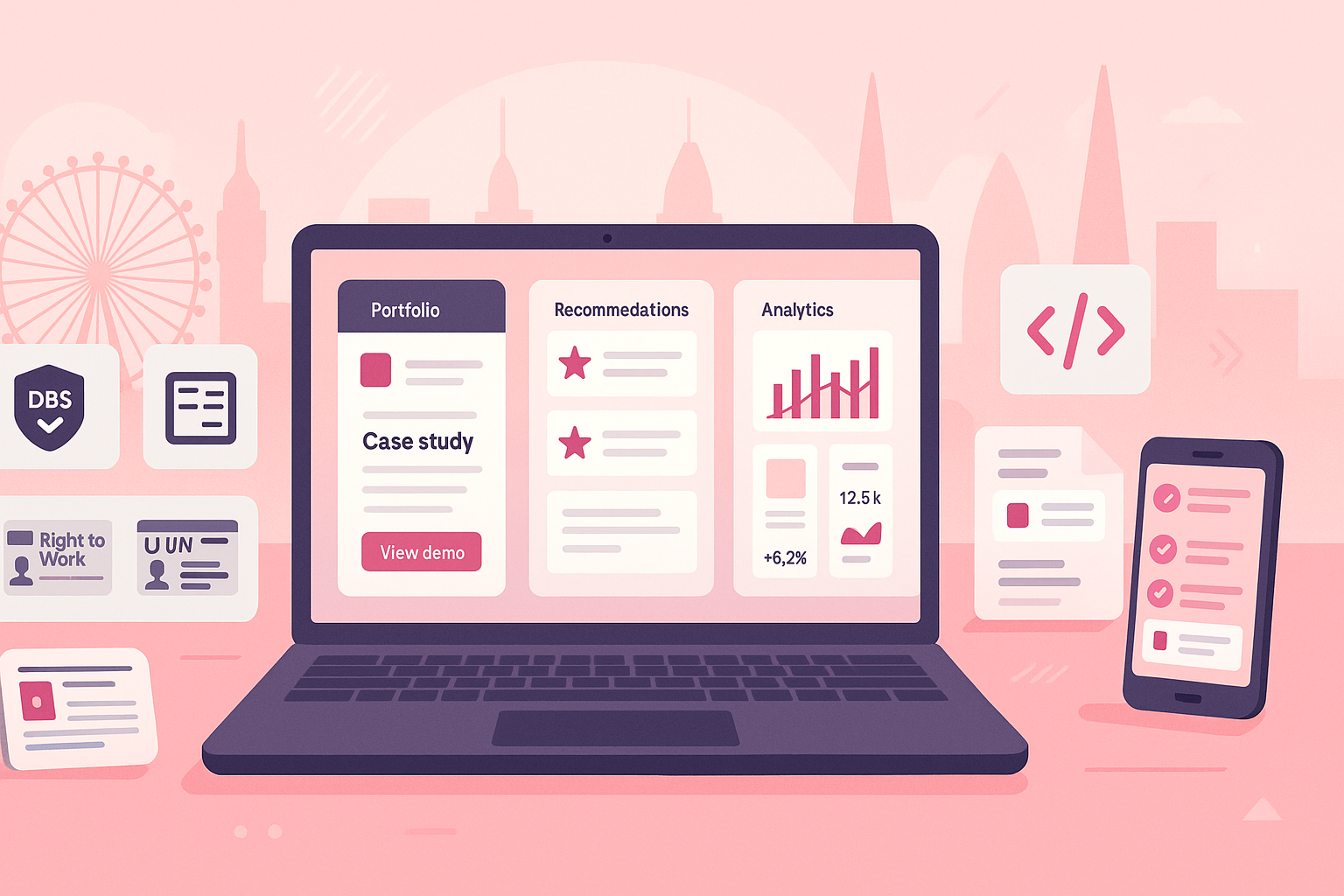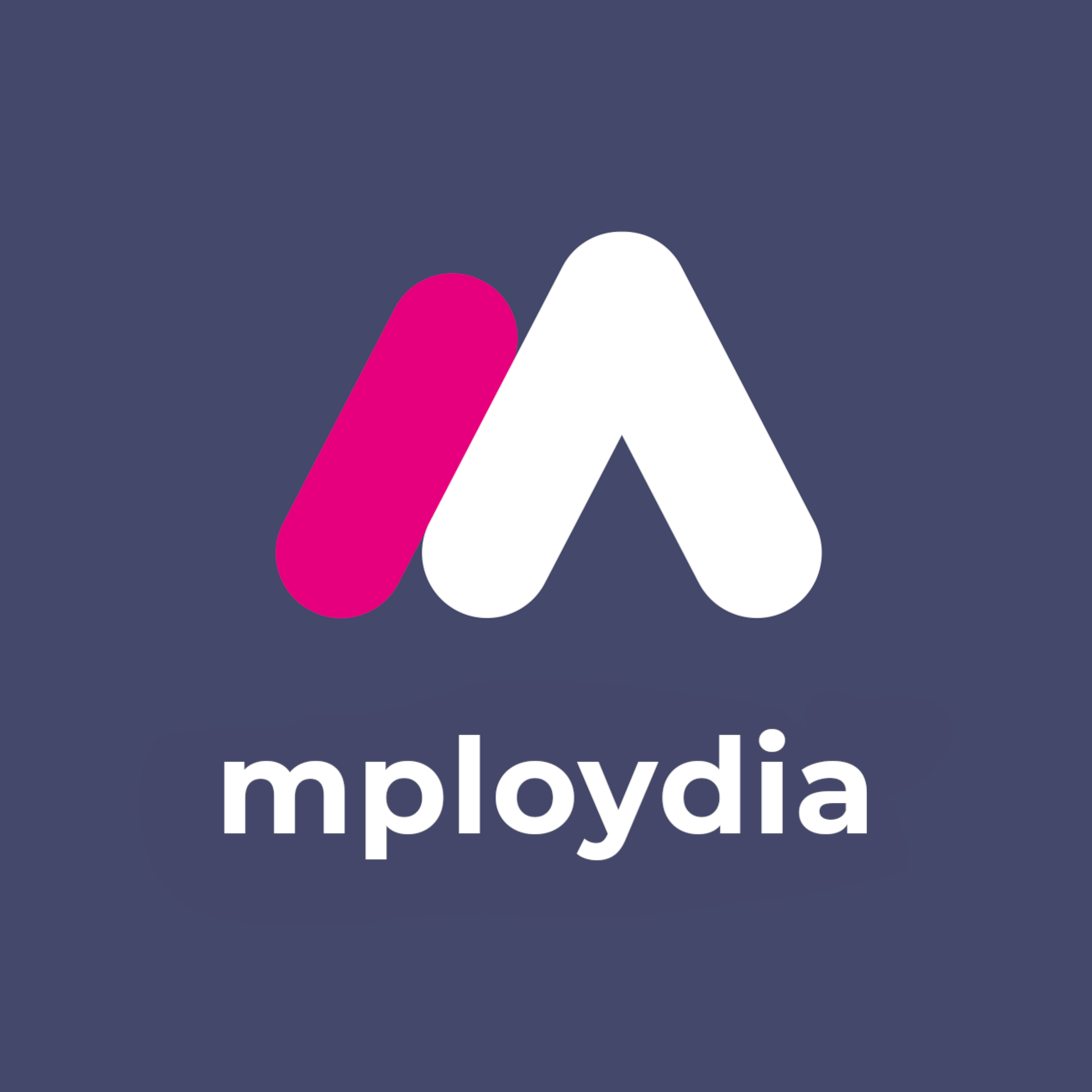
Graduate credibility signals UK: fast ways to prove you fit
Introduction: signals beat statements in the UK market
Hiring managers do not read claims. They scan for proof. In the UK graduate market, credibility signals decide whether you get interviews. If you can show evidence that you deliver, you win. If you rely on vague statements, you disappear. The good news: the highest‑impact signals are specific, buildable and often free or low‑cost. This article shows you exactly which signals UK employers trust, how to build them fast and how to place them where recruiters look first.
What are credibility signals and why they decide offers
Credibility signals are objective, verifiable proof that you can create value in a role. They reduce risk for employers. In a crowded UK market, signals separate doers from talkers. Claims like “strong communicator” are weak. Signals like “Led 4‑person team to deliver customer survey with 312 responses; presented insights to COO; recommended change raised NPS by 11 points” are strong. Your goal is to convert generic claims into crisp, verifiable proof points.
The UK lens: what matters specifically here
The UK market has its own shorthand. Learn it and use it.
- Degree result: First, 2:1, 2:2. A strong 2:1 or better signals academic capability. If your grade is lower, lean on stronger practical signals.
- Right to work: Be explicit. State UK right to work status or visa type and dates.
- Clear checks: DBS for education, care or youth work. Baseline Personnel Security Standard for some public roles. SIA licence for security. CSCS for construction sites. Clean UK driving licence for field roles.
- UK business context: Show familiarity with UK consumers, regulations and market norms. GDPR awareness, ASA advertising rules, FCA awareness for finance support roles, Ofcom/Ofgem basics for sector roles.
- UK‑specific pathways: Year‑in‑Industry, placement year, Spring Weeks, insight days, society leadership, Students’ Union roles and volunteering with UK charities carry weight.
The signal hierarchy: what carries the most weight
Not all signals are equal. Prioritise those that reduce employer risk fastest.
- Live performance evidence
- Portfolio assets with outcomes: case studies with metrics, links to shipped work, demos.
- Trials and gigs: freelance or pro‑bono projects for real UK organisations.
- Competitive results: hackathon wins, case comp finalist, Kaggle ranking.
- Third‑party validation
- References and recommendations on LinkedIn from UK supervisors or clients.
- Select certifications respected in the target function.
- Publications or features by credible outlets, university departments or partners.
- Behavioural proof
- Consistent shipping cadence, GitHub contribution graph, writing cadence, speaking events.
- Leadership roles with measurable outcomes, not just titles.
- Compliance readiness
- Right to work, DBS, sector cards or licences, basic H&S, GDPR awareness certificates.
Build high‑value signals in 30 days
You do not need a year. You need a plan and output.
Week 1: design your role‑specific signal pack
- Define target role and three core capabilities it requires. Example for marketing: customer insight, content production, analytics.
- Map 3 proofs per capability. These become your 9‑item signal pack.
- Scope outputs you can ship in 2–3 weeks. Prioritise small, real work over long courses.
- Line up a real beneficiary. A local charity, student society, micro‑business or peer can be your “client.”
Weeks 2–3: produce and ship credible output
By function, here is what to build fast in the UK context.
- Marketing and growth
- Run a 2‑week content sprint for a UK charity or society. Deliver 6 posts, 2 short videos and a landing page. Track reach, clicks and sign‑ups.
- Build a basic audience insight report: 10 interviews, 1 survey, 3 competitor teardowns. Present a 10‑slide deck with recommendations.
- Set up Google Analytics 4, basic events, and a dashboard. Report one conversion improvement.
- Data and analytics
- Clean and analyse a UK public dataset (ONS, data.gov.uk, NHS). Publish a notebook with questions, methods, results and a 1‑page brief for a non‑technical manager.
- Recreate a company KPI dashboard in Power BI or Tableau using sample data. Share an interactive link.
- Complete a mini A/B test simulation and explain your decision framework.
- Software and product
- Ship a small app or feature that solves a visible problem. Write a concise README, unit tests and a 2‑minute demo video.
- Fix a bug or add a feature in a popular open‑source repo. Open a PR and note the issue you closed.
- Run 5 user interviews, write 2 personas, and build a clickable prototype. Summarise learning and trade‑offs.
- Operations and customer support
- Map and improve a simple process for a society or small business. Measure cycle time before/after and document the SOP.
- Build a ticket triage macro set, knowledge base article and a 2‑minute Loom tutorial.
- Implement a spreadsheet tracker with conditional formatting, data validation and weekly reporting.
- Sales and partnerships
- Build a 50‑account UK prospect list with ICP criteria and reasons to believe. Send 30 tailored emails. Track reply and meeting rates.
- Draft a discovery call script and run 5 mock calls with peers or founders. Record one and summarise learnings.
- Create a one‑page proposal template and pricing options. Use with a real micro‑client.
- UX, design and content
- Redesign a public UK service or charity page. Justify decisions using GOV.UK Design System principles.
- Produce a 3‑piece content series with a keyword brief, draft, edit notes and performance plan.
- Run a 5‑user usability test and produce a 6‑slide findings deck.
Week 4: validate, package and publish
- Get one external endorsement per asset. Ask for a 2‑sentence testimonial that names outcomes.
- Quantify results. Use before/after metrics, baselines, absolute numbers and percentages.
- Package each piece as a 1‑page case study with context, actions, results, proof links and reflection.
- Publish everything on a simple portfolio and link it in your CV and LinkedIn.
Role‑specific UK signal kits you can copy
Use these as shopping lists. Pick 5–7 to assemble a strong pack.
Marketing (generalist or digital)
- 2 short case studies with UK organisations and measurable outcomes.
- GA4 property with events and a Looker Studio report.
- SEO teardown of 3 UK competitors with a 90‑day plan.
- A/B tested landing page with uplift.
- Google Analytics, Google Ads, HubSpot or CIM entry‑level certificate.
Data and analytics
- Jupyter or R notebooks on ONS or NHS datasets with clear problem statements.
- A Power BI dashboard with calculated measures and tooltips.
- SQL challenge solutions and a hosted database demo.
- Kaggle competition placement or top‑10 percent on a well‑known challenge.
- Microsoft or Google data certificate, or a Skills Bootcamp completion badge.
Software engineering
- 2–3 repos with readable code, tests and CI. One deployed demo.
- Merged pull request in an external repository.
- Issue triage or documentation contribution acknowledged by maintainers.
- Basic cloud deployment using Azure free tier. Include IaC snippets.
- One technical blog post explaining a trade‑off you made.
Product management
- Problem framing doc, user research summary and a clickable prototype.
- Prioritisation rationale using a simple framework and metrics.
- Release notes for a shipped feature with outcomes.
- Usability test report with 5 users.
- Agile fundamentals or PSPO‑I type certificate; Jira project with workflows.
Operations and supply chain
- Process map and SOP that cut cycle time or error rate.
- Capacity model in a spreadsheet with sensitivity analysis.
- Supplier scorecard and QBR slide template.
- Health and safety awareness certificate and GDPR awareness micro‑course.
- A short improvement Kaizen with before/after photos and times.
Sales and customer success
- Prospecting system with ICP, messaging, cadence and results.
- Recorded discovery call, objection handling notes and follow‑up email examples.
- A case study showing expansion or retention actions.
- Salesforce Trailhead badges mapped to role tasks.
- Two LinkedIn recommendations referencing revenue impact or customer outcomes.
Finance and accounting
- 3‑statement model for a UK SME scenario.
- Variance analysis deck with commentary.
- Mock month‑end checklist and reconciliations.
- Basic tax or compliance awareness for the UK context.
- AAT Level 2 progress or ACCA‑X fundamentals course completion.
HR and people ops
- Structured interview guide and scorecard with inter‑rater calibration.
- Onboarding plan and a 30‑60‑90 day checklist.
- Simple HR analytics dashboard on turnover or engagement.
- GDPR and UK employment law essentials micro‑course.
- CIPD Foundation progress plus two manager testimonials.
Sustainability and ESG
- Carbon footprint calculation for a small UK org using public factors.
- Materiality assessment summary and stakeholder map.
- Short policy pack draft aligned to UK regulations.
- B Corp practice assessment walkthrough.
- One published explainer on a UK policy change with clear implications.
Embed signals where hiring managers look
Stop hiding your proof. Put it where it’s scanned first.
CV
- Top third: 3 achievement bullets with numbers, links and context.
- Experience: outcome‑first bullets, not duties. Two lines max per bullet.
- Education: degree result, key modules, relevant projects with outcomes.
- Skills: tools you have used in shipped work, not “familiar with” lists.
- Headline formula: Target role | 2–3 capabilities | 1–2 proof outcomes.
- About section: 4–6 lines, 3 achievement bullets, portfolio link.
- Featured: case studies, dashboards, repo demo, testimonial screenshots.
- Recommendations: request 2–3 specific recommendations that name results.
Portfolio
- Home page: 3 best items above the fold, each with metrics and a 30‑second demo.
- Each project: context, your actions, outcomes, proof links, reflection.
- Make it lightweight and fast. No dead links or PDFs that take ages to load.
Cover letters
- One‑paragraph value thesis: problem, your proof, call to talk. Link to one relevant case study.
Interviews
- Bring printouts of 1‑page case studies. Offer to walk through decisions and results.
- Use the BAR method: Brief context, Action, Result with numbers.
UK‑specific credentials and checks worth getting fast
Prioritise only if they map to your target role.
- Compliance and safety: Basic DBS for roles with vulnerable groups. HSE basic health and safety awareness. Food hygiene Level 2 for hospitality. CSCS card for construction sites. SIA licence for security roles.
- Data and tech: Microsoft Azure Fundamentals, Power BI Data Analyst Associate, Google Data Analytics. Cisco Networking Academy modules. IBM SkillsBuild badges.
- Marketing and sales: Google Analytics 4, Google Ads Search, HubSpot Inbound, Meta digital marketing associate. Salesforce Trailhead Admin fundamentals.
- Project and service: ITIL Foundation, PRINCE2 Foundation, AgilePM Foundation.
- Finance and HR: AAT Level 2/3 units, ACCA‑X fundamentals, CIPD Foundation.
- Sector awareness: short CPD modules in GDPR, Safeguarding, FCA basics for consumer credit support roles, or sector‑specific CPD.
Where to earn quick, respected micro‑credentials
Focus on providers UK employers recognise and that give practical tasks.
- Skills Bootcamps in England via gov.uk providers for data, digital and project roles.
- OpenLearn and FutureLearn for CPD‑style modules with statements of participation.
- Google Career Certificates on Coursera for data, UX and support.
- Microsoft Learn and LinkedIn Learning for tool‑specific modules with assessments.
- AWS Educate and IBM SkillsBuild for cloud and data foundations.
- Cisco Networking Academy for networking and cyber basics.
- Forage virtual experience programmes for UK employers’ simulations. Treat outputs as portfolio pieces.
Secure credible referees without prior employment
You can get strong references before your first job.
- Who to ask: dissertation supervisor, module leader, placement mentor, society president you supported, charity manager, freelance client, hackathon organiser.
- How to ask: be specific. Provide 3 bullets naming the outcomes you want referenced. Offer a draft.
- Format: ask for a LinkedIn recommendation plus a short email reference you can share on request.
Message template
“Hi [Name], I’m applying for [role] and would value a short recommendation that speaks to [project], specifically [impact 1], [impact 2]. I can send a 3‑line draft and the final case study. Would you be comfortable posting on LinkedIn by [date]?”
Measure impact and avoid weak signals
Quality beats quantity. Measure and prune.
- Track portfolio engagement: clicks, time on page, demo completions.
- Replace vanity metrics with business‑relevant ones. Translate views into conversions or leads.
- Common mistakes to avoid:
- Overclaiming results without baselines or links.
- Stacking irrelevant certificates unrelated to the role.
- Broken links, typos and inconsistent dates across CV, LinkedIn and portfolio.
- AI‑generated fluff with no decisions, no metrics and no proof.
- Hiding right‑to‑work or compliance info until late. Put it visibly in your CV footer.
Tactical templates you can steal
Evidence bullet formula
Action verb + scope + tool/context + metric + business outcome + proof.
Examples
- Built a Power BI dashboard for a UK charity’s donations, linking 3 data sources; reduced weekly reporting time by 5 hours; board now reviews KPIs monthly. Demo.
- Rewrote support macros and knowledge base; cut first‑response time from 12h to 3h and raised CSAT from 4.1 to 4.6 in 30 days. Screenshots.
LinkedIn headline examples
- Graduate Data Analyst | SQL, Power BI, Python | ONS dashboard, NPS +11.
- Junior Marketer | Content, GA4, SEO | Charity campaign +28 percent sign‑ups.
Portfolio structure
- Home: hero proof line, 3 featured projects, clear contact.
- Projects: consistent case study format, 2‑minute demo video, links.
- About: capabilities, tools, right to work, one personal note.
12‑week runway if you can invest more time
If you have a full term before peak hiring, level up the ambition.
Weeks 1–2: discovery and scoping
- Interview 10 people working in your target roles.
- Define a bigger project with a real stakeholder and clear success metrics.
- Pick 1 certificate that deepens capability, not just a badge.
Weeks 3–6: build and iterate
- Ship v1 by week 4, collect feedback, ship v2 by week 6.
- Run a small A/B test or experiment to improve one KPI.
- Document trade‑offs and decisions. This becomes your interview material.
Weeks 7–9: validation and endorsement
- Present to a practitioner for critique and quote.
- Secure two recommendations that reference specific outcomes.
- Submit to a student conference, write a blog or record a short talk.
Weeks 10–12: distribution and applications
- Publish a crisp case study suite and a 90‑second trailer video.
- Tailor your CV and LinkedIn to 2–3 role types using your best‑fit projects.
- Apply in sprints of 15–20 targeted roles with custom hooks and links.
Rapid UK credibility checklist
Use this before you apply.
- CV top third has 3 quantified outcomes and 2 live links.
- LinkedIn headline communicates role, capabilities and proof.
- Portfolio has 3 live projects with demos and testimonials.
- Right to work, driving licence and DBS or sector checks visible if relevant.
- One respected, role‑relevant certificate only if it underpins real work.
- 2–3 recommendations naming your outcomes.
- No broken links, no typos, consistent dates and titles.
- Each application references one relevant case study in the first paragraph.
Final word: ship proof, not platitudes
The UK market rewards evidence. Build small, real projects, capture outcomes, secure third‑party validation and position your proof where decision‑makers scan. You do not need permission to start. You need a tight scope, a live beneficiary and a 30‑day execution plan. Ship, measure, refine and apply. Signals beat statements every time.
Next Steps
Want to learn more? Check out these articles:
Job Search Sprints: Build Momentum and Get Hired Faster Now
Map Your CV to the Job Spec: A Tactical Step-by-Step Guide
First Job CV Proof Points Employers Notice, Trust and Act On
Check out our Advanced Employability Course for all the help you need to get your dream job, fast.


